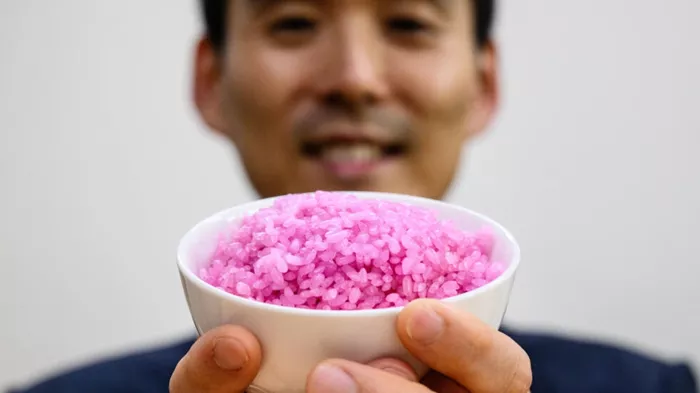From preventing famines to sustaining astronauts in space, Professor Hong Jin-kee believes his innovative “meaty rice” could provide an eco-friendly and ethical protein source. This unique dish, developed without harming any animals, resembles a regular bowl of rice but with a pink hue and a faint buttery aroma, attributed to its cultured beef muscle and fat cell content.
Hong, a professor at Seoul’s Yonsei University, highlighted the benefits of using cultured meat to AFP, stating, “We can obtain animal protein without the slaughter of livestock.” This aligns with global efforts to commercialize meat alternatives due to ethical and environmental concerns surrounding industrial livestock farming and its greenhouse gas emissions.
Hong’s research leverages his background in organoids and biomedical sciences, choosing rice as it is already a primary protein source in Asia. The current process is time-intensive: regular rice grains are coated with fish gelatin for adherence, then injected with beef cells and cultured for up to 11 days. The slightly porous structure of rice makes it an ideal medium for uniform cell growth.
The “meaty” rice developed by Hong contains 8% more protein and 7% more fat than regular rice. Although scaling the process is still a challenge, Hong aims to get approval for his creation as a relief food in two African countries. “For those limited to just one meal a day, a slight increase in protein content, even by a few percent, becomes incredibly important,” he emphasized.
South Korea, while not yet approving any cultivated meat for consumption, announced plans in 2022 to invest millions in a “foodtech” fund and prioritize cell-cultured meat research. Cultivated meat is already sold in Singapore and the United States, though Italy banned it last year to protect its livestock industry.
Despite potential ethical concerns regarding the sourcing of initial animal cells and the safety of culture media serums, Hong’s team asserts that their method significantly reduces the carbon footprint of protein production. Their process releases 6.27 kilograms of carbon dioxide per 100 grams of protein—eight times less than traditional beef production.
Neil Stephens, a lecturer at the University of Birmingham, noted that cultured meat is often seen as a climate-friendly alternative to traditional livestock. However, challenges remain in scaling production to be cost-effective, energy-efficient, and environmentally friendly. He suggested that “meaty” rice might have advantages due to its hybrid nature, combining animal cells with plant material to reduce costs and energy use. Yet, proving its environmental benefits and consumer acceptance remain hurdles.
A report by global consultancy AT Kearney predicts that by 2040, only 40% of global meat consumption will come from conventional sources, indicating a significant industry shift.
Hong is optimistic about biotechnology’s potential to revolutionize food consumption. He envisions lab-grown meat tailored to specific health conditions, such as muscle loss in older adults, and even AI-driven kitchens that analyze health data to prepare personalized meals.
“The world is on the cusp of an era where more biological information becomes available and we need to meticulously control our food,” Hong said. This futuristic vision includes AI-infused kitchens assessing health through blood analysis and instructing robots to prepare the most suitable meals.
[inline_related_posts title=”You Might Be Interested In” title_align=”left” style=”list” number=”6″ align=”none” ids=”10191,10188,10172″ by=”categories” orderby=”rand” order=”DESC” hide_thumb=”no” thumb_right=”no” views=”no” date=”yes” grid_columns=”2″ post_type=”” tax=””]



































